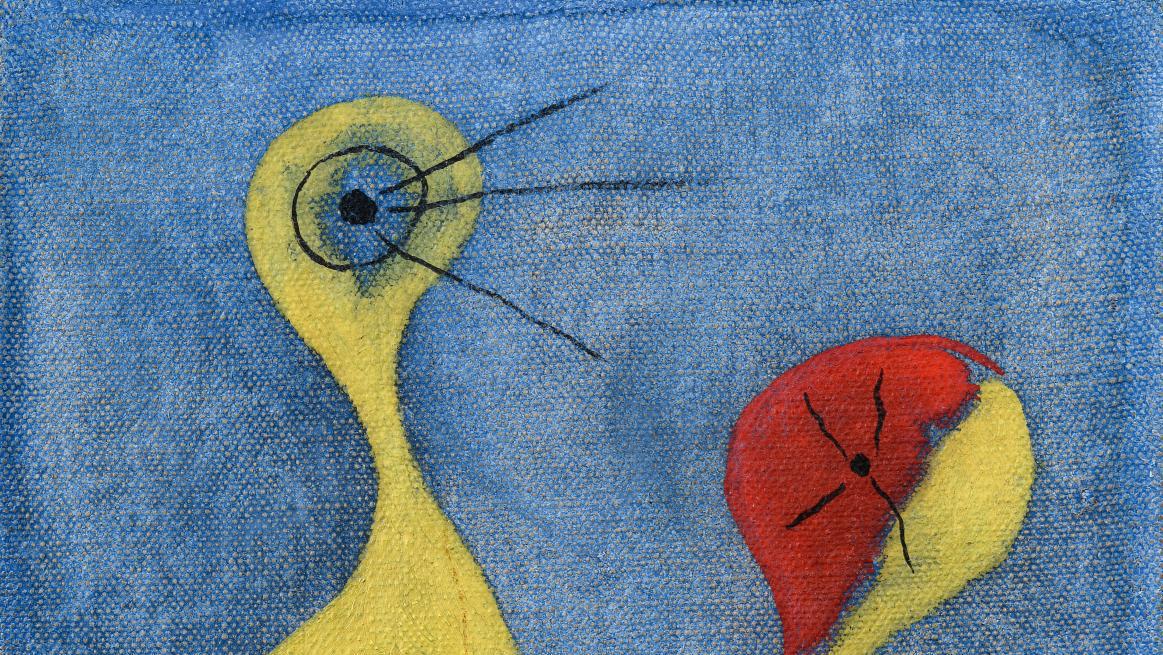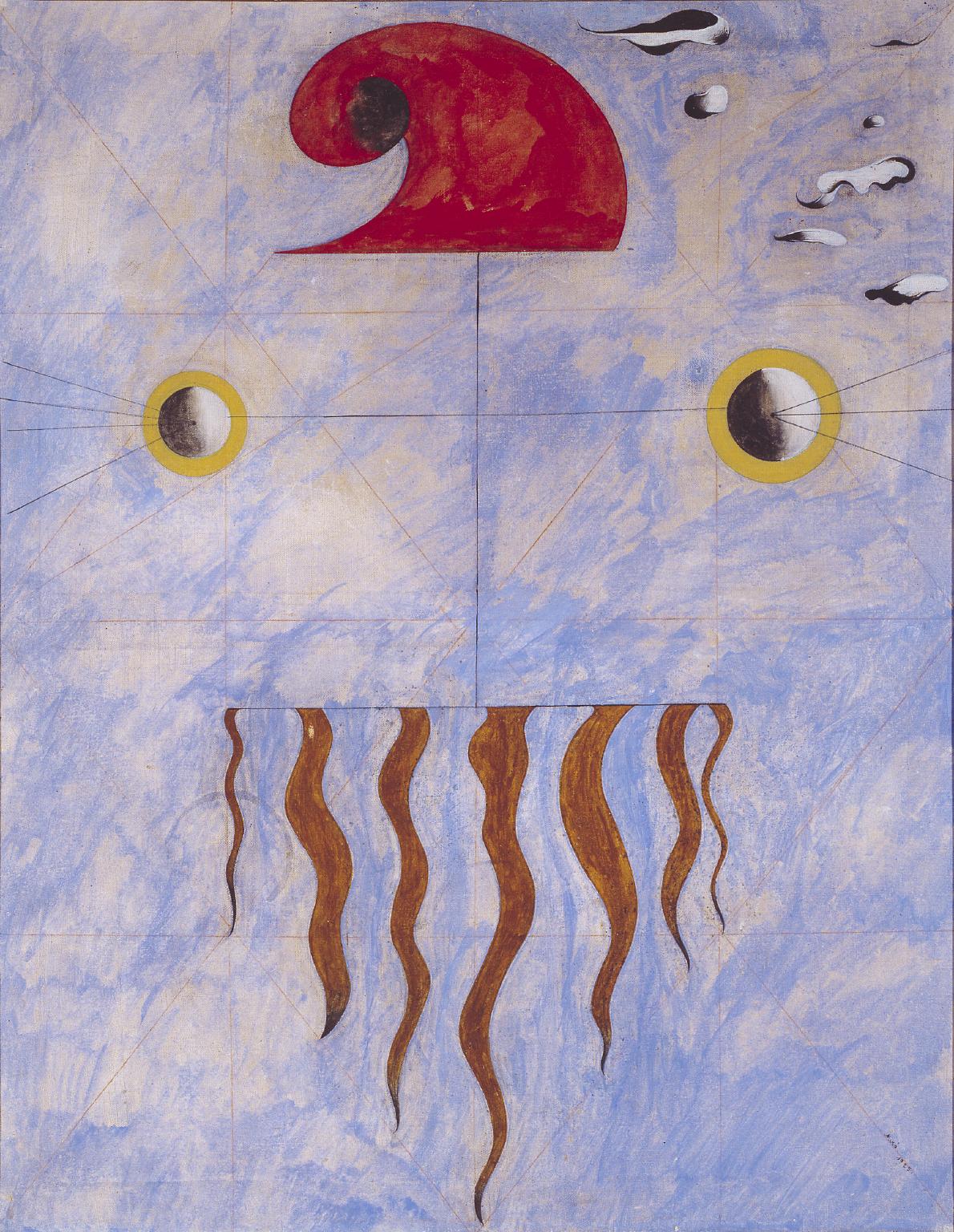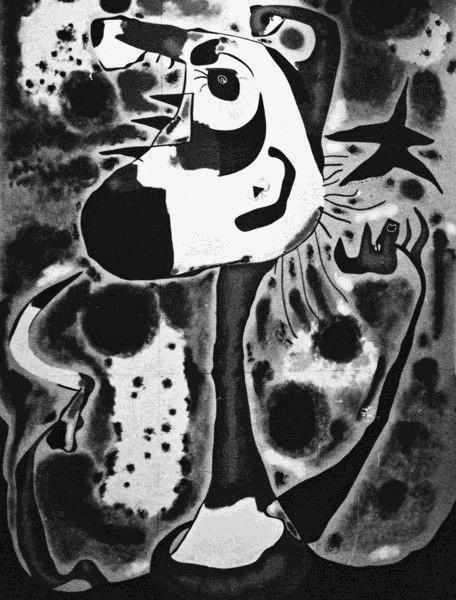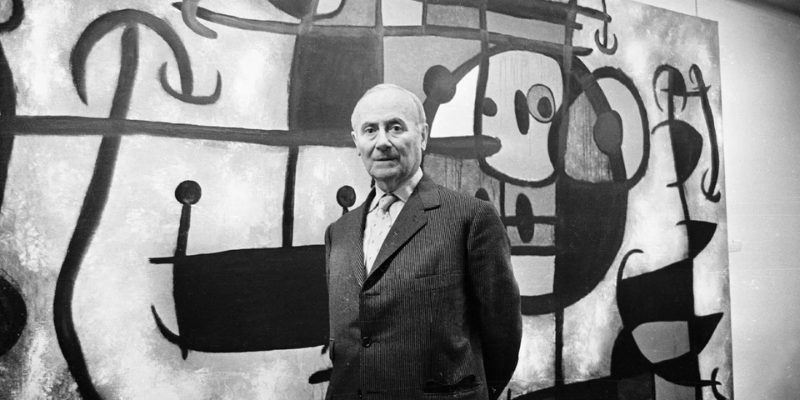Born in Barcelona on April 20, 1893, Joan Miró i Ferrà, better known by his stage name Joan Miró, was a well-known Catalan painter, sculptor, and ceramicist. His distinctive style, which combined aspects of Expressionism, Surrealism, and Fauvism, distinguished his artistic career and elevated him to a renowned position in the modern art world. This article explores Joan Miró‘s life and career, concentrating on two of his well-known pieces of art, “The Farm” and “The Red Sun.”

Early Life
The fact that Miró was born into a family of watchmakers and goldsmiths suggested that he would pursue artistic endeavours. Beginning at the age of seven, he took drawing classes as part of his early schooling. He showed signs of artistic ability when he joined in the La Llotja Fine Art Academy in 1907. His artistic career had only begun.

Career and Art Style
Early artistic influences on Miró included Paul Cézanne and Vincent van Gogh, which is evident in his Catalan Fauvist period artwork. Despite the negative feedback he received at his first solo show in Barcelona in 1918, his love of painting did not waver. In 1920 he relocated to Paris, where he was part of a vibrant artists scene, though he still spent his summers in Catalonia.
“The Farm,” which he finished in Mont-Roig del Camp, is one of his most famous works from this era. It signalled a shift in his style towards individualism with a touch of Catalan nationalism. The painting’s subsequent owner, Ernest Hemingway, characterised it as a portrayal of Spain’s dualities, encapsulating the nation’s spirit in both its present and past.

When Miró joined the Surrealist group in 1924, his trip took an even more bizarre turn. His art changed throughout time, embracing collage, dreamlike automatism, and a rejection of conventional painting framing. It was around this time that Miró produced his “dream paintings.” Miró’s “Head of a Catalan Peasant” series demonstrates how his art maintained a symbolic, schematic language despite his surreal experiments. He and Max Ernst worked together to create ballet performance designs in 1926.

The Spanish Civil War significantly influenced Miró’s artistic output. Although he had avoided overt political criticism in the past, his art gained political significance when he was hired to paint the mural “The Reaper” for the Spanish Republican Pavilion at the 1937 Paris Exhibition. During World War II, Miró’s life took an unexpected turn as he fled the approaching German invasion of Paris by moving to Varengeville in Normandy and later to Spain. He produced the “Constellations” series during this period, which featured women, birds, the moon, and celestial symbolism—themes that would recur frequently in his later works.

Following the war, Miró kept broadening his creative boundaries by creating sculptures, ceramics, and lithograph editions. His gift to the Maeght Foundation in Saint-Paul-de-Vence, France, which displayed his ceramics and sculptures, also brought him acclaim. Remarkably, Miró produced a tapestry for the World Trade Centre in New York City in 1974; sadly, it was destroyed in the September 11 attacks.

His work “The Sun, the Moon and One Star,” which is often referred to as “Miró’s Chicago,” was first shown in downtown Chicago in 1981, cemented his reputation as a master of modern art.
Joan Miró Artworks
The Farm

A pivotal piece in Miró’s career, “The Farm” embodies both his maturing artistic style and his Catalan heritage. Views of his family’s farm, complete with vegetation, animals, tools, and evidence of human activity, are included in the painting. Miró saw it as a distillation of his rural upbringing, trying to convey all he liked about it into a painting. The painting is a masterwork that foreshadowed his later surreal works because of its intensity, painstaking attention to detail, and symbolic components.
With its combination of symbols, abstracted materials, and a quasi-cubist setting, “The Farm” resisted easy classification. The painting’s destiny was greatly influenced by Miró’s friendship with Ernest Hemingway, who was keen to own it since he saw it as a representation of the spirit of Spain.
The Red Sun

A pivotal moment in Miró’s career, “The Red Sun” is a powerful piece of art that combines large brushstrokes with intricately detailed arrangements. This sculpture has a delicate yet resonant surface created by a red sphere gleaming against a vivid blue area. There are two different arrangements in the piece of art: one in the right corner and one on the blue background. These quickly painted arrangements, which include a happy tiny face, are indicative of Miró’s developing creative style.
Joan Miró’s unwavering approach to artistic expression, his ability to continuously alter his style, and his noteworthy contributions to modern art all contribute to his reputation as an artist. The world continues to appreciate and celebrate Miró’s dedication to pushing limits, embracing his Catalan roots, and creating art.
Read Also:
The Fantastical Dreamer Of The Art World: Exploring The Artistic Journey Of Joan Miró






